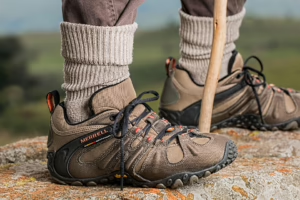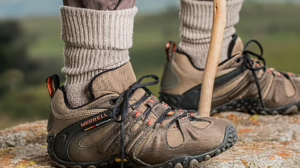Muscle Spasms in Seniors: Understanding Risk Factors and Management
Muscle spasms are involuntary contractions of one or more muscles. In seniors, these spasms can significantly affect quality of life, leading to discomfort and impaired mobility. Understanding the risk factors, causes, and management strategies related to muscle spasms in older adults is vital for healthcare providers, caregivers, and patients alike.
What Are Muscle Spasms?
Muscle spasms, often described as cramps, can occur in any muscle group and may last for a few seconds to several minutes. They can be benign or indicate underlying health issues, particularly in seniors who may have multiple chronic conditions.
Types of Muscle Spasms
- Nighttime Leg Cramps: These occur at night and typically affect the calf muscles, causing sudden pain and discomfort.
- Exercise-Induced Cramps: Common among seniors who engage in physical activity, particularly if they are not accustomed to regular exercise.
- Chronic Muscle Spasms: Often associated with neurological issues such as multiple sclerosis or Parkinson’s disease.
Risk Factors for Muscle Spasms in Seniors
Several risk factors increase the likelihood of muscle spasms in older adults:
1. Dehydration
Seniors are unusually susceptible to dehydration due to decreased thirst perception and underlying health issues. Dehydration can result in electrolyte imbalances, increasing the risk of muscle spasms.
2. Electrolyte Imbalance
Low levels of potassium, calcium, or magnesium can contribute to muscle spasms. Many seniors suffer from dietary deficiencies or the effects of medications that may disrupt these vital minerals.
3. Medication Side Effects
Certain medications, especially diuretics or medications for high blood pressure, can cause dehydration and electrolyte imbalances. Consulting healthcare providers about the possible side effects of prescribed medications is essential.
4. Sedentary Lifestyle
A lack of physical activity can lead to muscle weakness and increased spasms. Exercise helps maintain muscle strength and flexibility, reducing the incidence of muscle cramps.
5. Chronic Medical Conditions
Conditions such as diabetes, kidney disease, and neurological disorders can predispose seniors to muscle spasms. Managing these underlying conditions is vital for preventing spasms.
6. Poor Blood Circulation
Issues with blood flow can cause muscle fatigue and cramping. Conditions such as peripheral artery disease (PAD) are common in seniors and can lead to reduced blood circulation to the muscles.
7. Temperature Extremes
Environmental factors like extreme heat or cold can trigger muscle spasms. Seniors, often more sensitive to temperature changes, should take precautions in such conditions.
Causes of Muscle Spasms in Seniors
Understanding the underlying causes of muscle spasms is crucial for effective management. Here are some common causes:
1. Overexertion
Even light exercise may lead to muscle cramps in seniors who are not physically active. The sudden demand on the muscles, particularly if they are not properly warmed up, can cause spasms.
2. Muscle Fatigue
Extended periods of physical activity can lead to muscle fatigue, resulting in cramps. Seniors engaging in new or excessive physical routines are at increased risk of experiencing fatigue-related spasms.
3. Nutrient Deficiency
A well-balanced diet is essential for muscle health. Deficiencies in key nutrients can contribute to muscle spasms, which makes it crucial for seniors to maintain a diet that includes adequate vitamins and minerals.
4. Nerve Damage
Conditions like diabetes can lead to neuropathy, causing muscle spasms. This nerve damage alters the normal regulatory functions that prevent muscle cramps.
5. Stress and Anxiety
Psychological factors can also influence muscle health. Increased stress and anxiety can lead to muscle tension and subsequent spasms, particularly in seniors experiencing significant life changes.
Assessing Muscle Spasms in Seniors
When assessing muscle spasms, it’s essential for healthcare providers to consider the frequency, duration, and intensity of the spasms, as well as associated symptoms. A thorough medical history and physical examination are necessary to rule out underlying conditions.
Key Assessment Questions
- Frequency: How often do you experience spasms?
- Duration: How long do the spasms last?
- Triggers: Are there specific activities or times of day when they occur?
- Associated Symptoms: Do you experience any additional symptoms, such as pain, weakness, or numbness?
Diagnostic Tests
In some cases, healthcare providers may recommend further diagnostic tests, including:
- Blood tests: To check for electrolyte levels and nutritional deficiencies.
- Electromyography (EMG): To assess the health of muscles and the nerve cells that control them.
- Imaging studies: Such as MRIs, if there are concerns about neurological conditions.
Management Strategies for Muscle Spasms
Effective management involves a combination of lifestyle changes, medical treatments, and home remedies. The approach should be individualized based on the underlying causes and health status of the senior.
1. Hydration
Ensuring adequate fluid intake is essential. Seniors should aim to drink enough water throughout the day, especially during hot weather or after physical activity.
2. Nutritional Counseling
A balanced diet rich in potassium, calcium, and magnesium is vital. Foods such as bananas, dark leafy greens, nuts, dairy products, and whole grains can help maintain healthy electrolyte levels.
3. Stretching and Warm-up Exercises
Regular stretching and warm-up exercises before engaging in physical activities can help prevent muscle spasms. Gentle range-of-motion exercises can also improve flexibility and reduce muscle tension.
4. Physical Therapy
For seniors prone to recurrent spasms, physical therapy may be beneficial. A therapist can design a tailored exercise program to strengthen muscles and improve overall function.
5. Medication Management
In cases where spasms are severe or persistent, healthcare providers may prescribe medications. Antispasmodics or muscle relaxants may provide relief, but careful monitoring is required due to the risk of side effects in seniors.
6. Massage and Heat Therapy
Massage can help ease muscle tension, while heat application can increase blood flow and reduce spasms. A warm bath or heating pad may be effective for relief.
7. Mind-Body Techniques
Stress management techniques, including meditation, yoga, and deep-breathing exercises, can help reduce the incidence of spasms related to anxiety and stress.
8. Footwear and Supportive Devices
Proper footwear can provide stability and reduce the risk of muscle spasms, especially for seniors who are physically active. Additionally, supportive devices such as braces or orthotics may help.
Conclusion
Muscle spasms in seniors can significantly impact daily activities and overall well-being. Understanding the risk factors, causes, and effective management strategies is essential for improving the quality of life for older adults experiencing these involuntary contractions. Most importantly, a collaborative approach involving healthcare providers, caregivers, and seniors themselves is key to mitigating the frequency and severity of muscle spasms. Implementing preventive measures and making lifestyle adjustments can empower seniors to lead more active and fulfilling lives.
References
- National Institutes of Health. Muscle Cramps: What Are They About?
- Mayo Clinic. Muscle Cramps: Treatment & Management.
- Cleveland Clinic. Understanding Muscle Spasms and Cramps.
- American Academy of Family Physicians. Muscle Spasms: Causes and Prevention.
- Centers for Disease Control and Prevention. Health and Quality of Life among Seniors.
- Harvard Health Publishing. Managing Muscle Cramps.
- World Health Organization. Aging and Health.
- American Geriatrics Society. Exercise and Physical Activity in Older Adults.
- National Center for Complementary and Integrative Health. Complementary Health Approaches for Pain Management.
This article provides a comprehensive overview of muscle spasms in seniors, including their risk factors and management strategies, drawing from reputable sources that can aid further understanding and research in this area.


























Add Comment